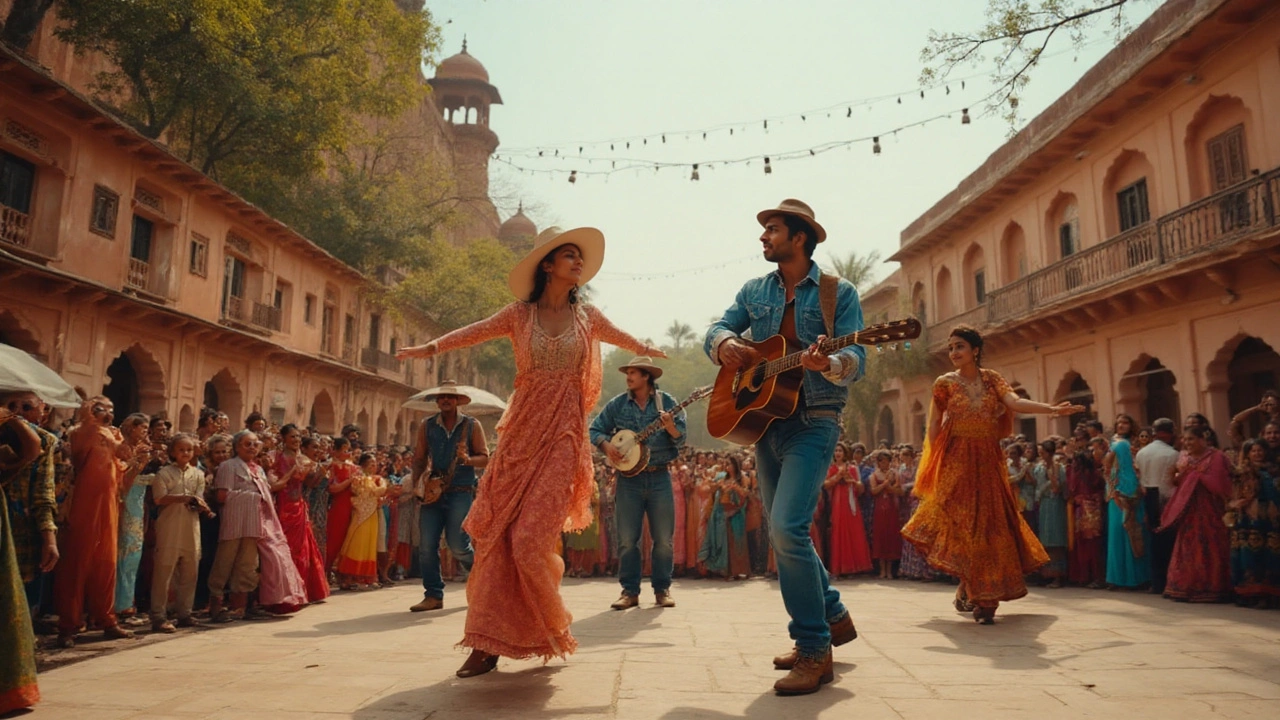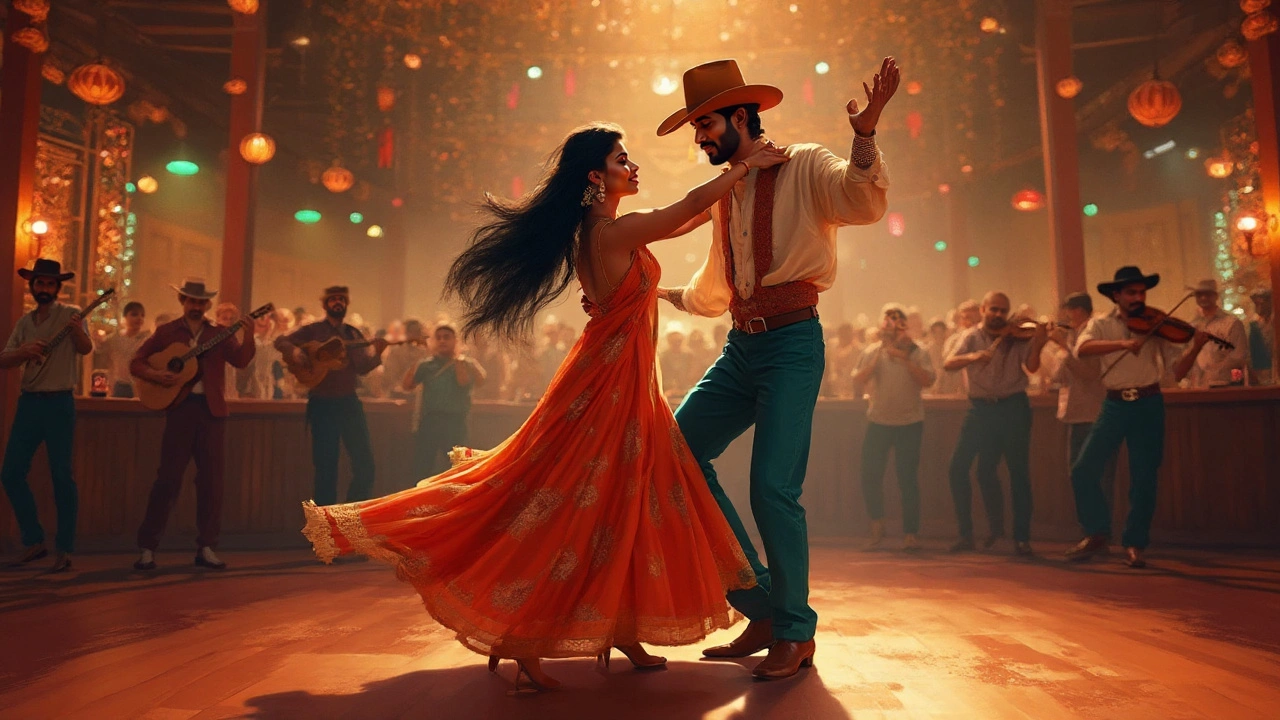Texas Two-Step Knowledge Quiz
Texas Two-Step is a partner dance that emerged in Texas during the early 1900s, usually performed to country and western music.
Quick Take
- Origin: Texas, early 20thcentury
- Music: Country western, western swing
- Basic pattern: Quick‑quick‑slow‑slow (1‑2‑3‑4)
- Typical venue: Honky‑tonk or dance hall
- Attire: Cowboy boots, Western shirt, optional bolo tie
Historical Roots of the Texas Two-Step
The dance grew out of the Country Western Dance tradition, borrowing steps from the Western Waltz and the Polka. By the 1920s, Texas musicians like Bob Wills were blending swing, jazz, and fiddle tunes, creating a lively rhythm that begged a matching dance. Dance halls across Austin, Fort Worth, and Dallas started teaching the new style, and it quickly spread to honky‑tonks throughout the Southwest.
According to the Texas State Historical Association, the term "two‑step" originally described a marching step used by cavalry units. When civilians adopted the rhythm for social dancing, the name stuck, evolving into the distinct Texas Two-Step we know today.
Musical Backbone: Texas Country Music
While any upbeat country track works, the dance really shines with Texas Country Music - think steel guitars, fiddle riffs, and a steady 4/4 beat around 120BPM. Classic hits like "San Antonio Rose" and modern staples such as "Beer in Mexico" provide the perfect quick‑quick‑slow‑slow cadence. The music’s structure dictates the dancers’ footwork, making it essential to choose tracks with clear downbeats.
Core Components: Steps, Lead, and Follow
The Basic Step Pattern consists of four counts: two quick steps (counts 1‑2) followed by two slower steps (counts 3‑4). The leader (the Lead) initiates the direction, while the follower (the Follow) mirrors the motion, maintaining a close but comfortable frame.
- Count 1: Lead steps left with left foot; Follow mirrors right with right foot.
- Count 2: Lead steps right with right foot; Follow mirrors left with left foot.
- Count 3 (slow): Lead steps left forward, extending weight.
- Count 4 (slow): Lead steps right forward, completing the box.
After several rotations, dancers often add a Circle Turn or a simple swing‑out to keep things fresh. The key is staying on the beat and keeping the connection tight.
Where It Happens: Honky‑tonk and Dance Halls
A typical Honky‑tonk provides a long, polished floor, dim lighting, and a live band or jukebox. The atmosphere is informal; couples often shuffle in and out of the dance floor without strict reservations. In contrast, a Dance Hall may host formal lessons and scheduled “two‑step nights,” giving beginners a structured environment.

Dress Code and Gear
While you don’t need a full cowboy outfit, certain items enhance both comfort and authenticity:
- Cowboy Boots - Provide ankle support for pivots.
- Western shirt (sleeves often rolled up for mobility).
- Jeans or leather chaps for a classic look.
- Bolo tie or hat (optional, adds flair).
Loose‑fitting clothing can hinder footwork, while overly stiff shoes may cause blisters. Choose footwear with a modest heel to help slide and pivot smoothly.
Comparing Texas Two-Step with Similar Partner Dances
| Feature | Texas Two-Step | Country Waltz | Cajun Two-Step |
|---|---|---|---|
| Step Count | Quick‑quick‑slow‑slow (4 counts) | 1‑2‑3 (3‑step waltz) | Quick‑quick‑slow‑slow (similar) |
| Typical Tempo | 120‑140BPM | 84‑96BPM | 130‑150BPM |
| Music Style | Western swing, modern country | Traditional country ballads | Acadian Cajun, zydeco |
| Footwork Emphasis | Box step with optional turns | Rotating turn patterns | Syncopated foot taps |
| Primary Setting | Honky‑tonks, dance halls | Ballroom‑style venues | Louisiana Cajun festivals |
The table shows why the Texas Two-Step remains the go‑to dance for a lively night out: it balances energy with simplicity, making it accessible yet fun.
Learning the Dance: Tips for Beginners
- Start with the count: tap your left foot on "1", right on "2", then slow steps on "3" and "4".
- Keep your frame: the lead’s right hand on the follower’s waist, left hand holding lightly at shoulder level.
- Practice the basic box on a solid surface before moving to a slick floor.
- Listen to the music first; feel the beat before stepping.
- Take a short lesson at a local dance hall-most places offer a free introductory session.
Advanced Moves and Variations
Once you’re comfortable with the basics, spice things up with:
- Swing Out - a quick turn where the lead releases the right hand, pivots, and reconnects.
- Cross‑Body Lead - the lead guides the follower across the floor, and they replace positions.
- Multiple spins (single, double) performed during the slow counts.
- Syncopated footwork during the quick counts for a flashy effect.
These variations keep the dance fresh and let advanced couples showcase personality.
Culture and Community Impact
The Texas Two-Step isn’t just a dance; it’s a social glue in many Texas towns. Community events like rodeos, county fairs, and high‑school proms often feature two‑step contests. Winning couples earn ribbons and local fame, reinforcing the dance’s role as a cultural rite of passage.
Researchers at the University of Texas note that regular participation in partner dances improves balance, provides cardiovascular benefits, and strengthens social bonds-especially important in rural areas where other recreational options may be limited.
Next Steps: Where to Dive Deeper
If you loved this overview, you might explore:
- The history of Western Swing Music-the sound that gave the two‑step its signature groove.
- Regional variations like the Texas Country Polka, which blends the two‑step rhythm with a faster 2/4 beat.
- Online tutorials from Texas dance instructors-many post step‑by‑step videos on YouTube.
Every new song, venue, or partner offers a chance to refine your technique and enjoy the vibrant Texas dance scene.

Frequently Asked Questions
What music is best for the Texas Two-Step?
Tracks with a steady 4/4 beat around 120‑140BPM work best-think western swing, modern country hits, or classic Bob Wills recordings.
Can beginners learn the Texas Two-Step without a partner?
Yes. Practicing the basic foot pattern alone helps internalize the rhythm. Many studios offer solo drills before pairing up.
How does the Texas Two-Step differ from a country waltz?
The two‑step uses a quick‑quick‑slow‑slow eight‑beat pattern, while the waltz follows a 1‑2‑3 three‑beat rhythm. Tempo and footwork are noticeably faster in the two‑step.
Do I need cowboy boots to dance the Texas Two-Step?
Boots are not mandatory, but they provide ankle support and a smoother pivot. Flat shoes can work if they have a small heel.
Where can I find Texas Two-Step lessons in Canada?
Cities with strong country‑music scenes-Toronto, Vancouver, Calgary-often host weekend workshops at community centres or country‑themed bars. Check local event listings for "Two‑Step Night".
What are common mistakes beginners make?
Rushing the slow steps, losing the frame, and stepping on the partner’s foot are typical. Slow down, focus on weight transfer, and keep a relaxed hold.
